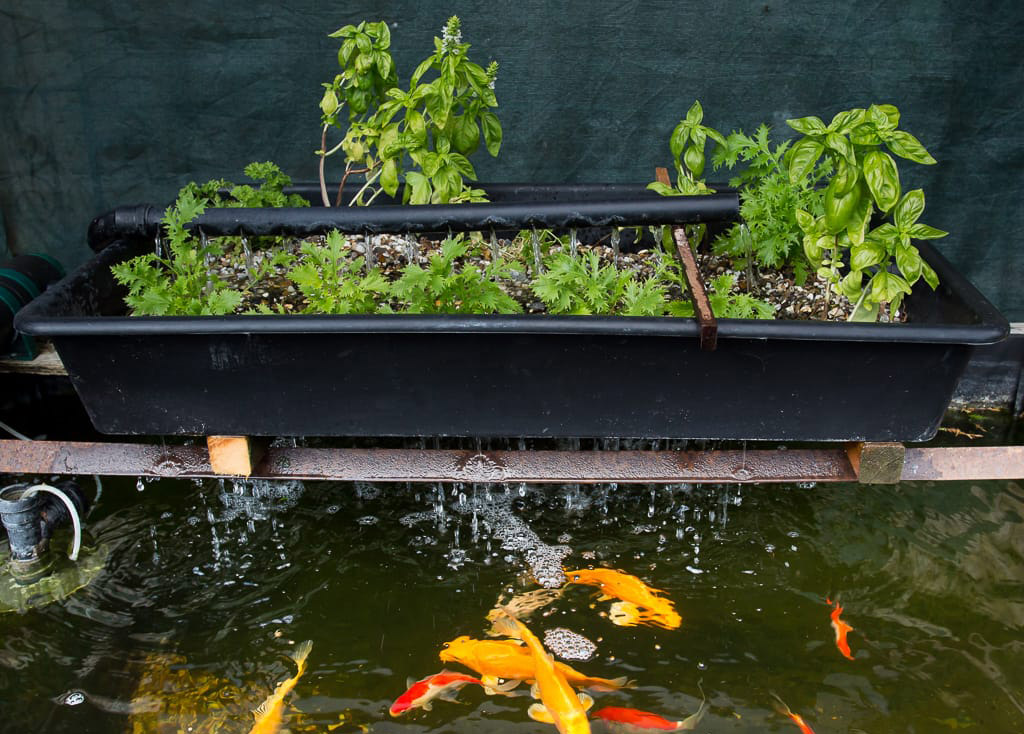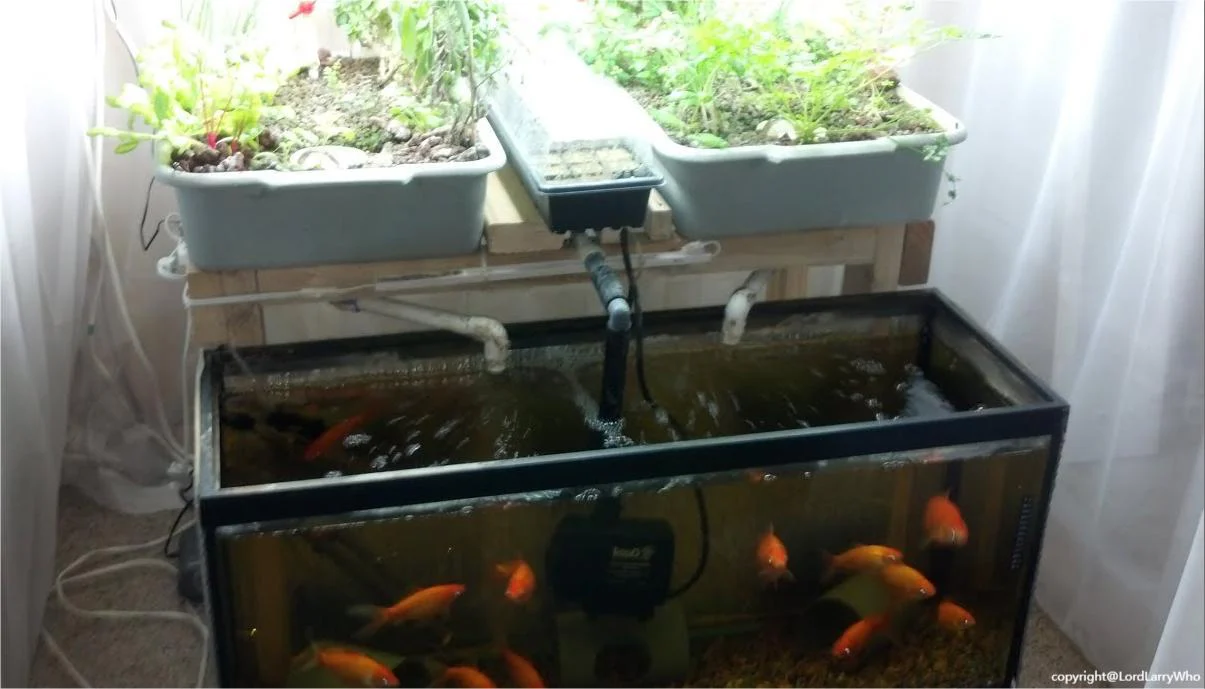I still remember the first time I came across aquaponics — a photo of someone growing lettuce above a fish tank. At first, it sounded too good to be true. Plants and fish helping each other thrive in one system? But once I tried it, I realized how ingenious and sustainable it really is. Aquaponics combines aquaculture (raising fish) with hydroponics (growing plants without soil), creating a closed-loop system that practically takes care of itself once established.
This method is gaining attention among home gardeners for good reason: it’s water-efficient, chemical-free, and surprisingly easy to start on a small scale. With just a few supplies and some patience, you can turn a corner of your home, balcony, or backyard into a self-sustaining food source. Let’s walk through how to build your own aquaponics setup from scratch, even if you’ve never grown a plant or raised a fish before.
What Is Aquaponics and How Does It Work?
At its heart, aquaponics is about creating balance between fish and plants. The fish produce waste, which turns into ammonia. Beneficial bacteria then convert that ammonia into nitrates — a natural fertilizer that plants love. In turn, the plants absorb those nutrients and clean the water before it cycles back to the fish tank.
It’s nature’s recycling system, simplified and contained within your home. There’s no need for chemical fertilizers or constant watering, and the entire process uses around 90% less water than traditional gardening. Once the bacteria colony is established, the system becomes remarkably stable — a living, breathing ecosystem that just needs a little attention and care.
Why Start an Aquaponics System at Home?
There’s something incredibly satisfying about harvesting your own lettuce or herbs knowing they were nourished by your fish. Beyond the novelty, aquaponics offers practical benefits — fresh produce, homegrown fish, lower grocery costs, and a smaller environmental footprint.
Because the system reuses water, it’s ideal for dry regions or homes trying to conserve resources. Plus, it eliminates the need for pesticides and fertilizers, so everything you grow is truly organic. I started my first small system on a kitchen counter with a single goldfish and some basil plants — and watching that ecosystem flourish was both educational and rewarding.

Choosing the Right Aquaponics System for Beginners
Before you begin the process, it helps to understand the three main types of aquaponics setups. The Media Bed System is perfect for beginners — it uses gravel or clay pebbles to support plants, filters the water naturally, and requires minimal maintenance.
Then there’s the Nutrient Film Technique (NFT), where a thin layer of water flows through small channels to feed the roots — great for leafy greens but more technical to manage. The Deep Water Culture (DWC) system, on the other hand, lets plants float on rafts above nutrient-rich water, ideal for larger systems or greenhouses.
For most beginners, a small media bed system strikes the right balance of simplicity and reliability. Once you’ve mastered the basics, it’s easy to upgrade or experiment with other types.
Essential Components You’ll Need
A functional aquaponics setup has a few core parts working together. The fish tank is where your aquatic friends live — you can use anything from a glass aquarium to a food-grade plastic tub. The grow bed sits above or beside the tank and holds your plants. Fill it with a growing medium such as expanded clay pellets or lava rock; these materials provide root support and surface area for beneficial bacteria.
You’ll also need a water pump and aeration system to circulate oxygen-rich water between the tank and grow bed. Basic plumbing and tubing connect the two components, creating a continuous flow. If you’re setting up indoors, consider adding LED grow lights to ensure your plants get enough light. Once you’ve gathered these essentials, the rest comes down to patience and fine-tuning.
Selecting the Right Fish for Your Aquaponics System
Not all fish are created equal for aquaponics. Some species handle fluctuations in temperature and water quality better than others. Tilapia is a top choice — hardy, fast-growing, and great for warm climates. Goldfish are another beginner favorite since they’re affordable and easy to care for. If you’re setting up a larger tank, catfish or koi can also thrive.
Fish health depends on maintaining a stable water temperature and proper pH (usually between 6.8 and 7.2). A simple water test kit will become your best friend. Feed your fish with quality pellets or natural foods like worms or duckweed — but don’t overfeed. Excess food can upset the delicate balance of your system.
Choosing the Best Plants to Grow
When starting out, go with plants that don’t demand too many nutrients. Leafy greens such as lettuce, spinach, and kale do beautifully in aquaponics, as do herbs like basil, mint, and parsley. Once your system matures, you can try nutrient-hungry plants like tomatoes, peppers, or cucumbers.
The secret to success is balance — matching your fish population with the number of plants so that nutrients are neither scarce nor excessive. I found that mixing quick-growing greens with slower herbs helps keep the system stable and productive. You’ll also enjoy a steady supply of fresh produce for salads, cooking, or garnishing your meals.

Setting Up Your Home Aquaponics System: Step-by-Step
Start by choosing a location with plenty of light and a consistent temperature. Set up your fish tank and grow bed, then connect them using your pump and plumbing. Fill the system with clean water and test the pH — adjust it to the ideal range before adding anything living.
Next, you’ll need to cycle the system. This means running it for several weeks to allow beneficial bacteria to establish and convert fish waste into nitrates. You can do this with or without fish (using pure ammonia as a starter). Once your water tests show stable ammonia and nitrate levels, you can introduce fish and plants.
From there, it’s about observation and balance. Watch how your fish behave, check your water weekly, and tweak things as you go. Within a month or two, you’ll start seeing lush, green growth above and happy fish below.
Common Problems (and How to Fix Them)
Every beginner hits a few bumps. Cloudy water usually means your system is still cycling or you’re overfeeding. Fish dying? Check oxygen levels, temperature, and ammonia — something’s likely off in the water chemistry. If your plants turn yellow, they may be lacking nutrients or the pH might be too high.
Algae growth is another common issue, especially in outdoor systems. Reduce sunlight exposure to the tank and avoid overfeeding fish. Most issues have simple fixes once you understand how the system reacts — and the more you observe, the more intuitive it becomes.
Maintenance Tips for Long-Term Success
Once your system stabilizes, maintenance becomes straightforward. Test water parameters regularly, feed fish once or twice a day, and remove any dead plant material promptly. Top up water levels as evaporation occurs, and clean your pump and grow bed periodically to keep everything running smoothly.
Prune plants regularly to encourage healthy growth, and harvest often — it helps maintain nutrient balance. Keeping a simple logbook of your readings, harvests, and fish feeding helps track patterns and prevent future issues.
Budgeting and DIY Tips for Under $200
You don’t need an expensive kit to start. A small DIY aquaponics system can be built for under $200 using recycled containers or storage bins. A basic 20–30 gallon fish tank, a cheap submersible pump, PVC pipes, and clay pebbles are enough to get you going.
Local classifieds or thrift stores are goldmines for affordable materials. I once built a fully functional system using an old aquarium, a few plastic plant trays, and a secondhand pump — and it worked beautifully. The key is creativity and starting small. Once you see success, you can always scale up later.
Growing Fresh Food the Smart Way
Building an aquaponics system isn’t just about growing plants — it’s about creating a small, thriving ecosystem right in your home. It teaches patience, observation, and respect for nature’s balance. There’s something special about harvesting a handful of herbs or greens, knowing your fish helped make it possible.
If you’ve been curious about aquaponics, don’t overthink it — just start. Begin small, learn as you go, and enjoy the process. Watching life flourish under your care, from fish to foliage, is one of the most rewarding experiences any home grower can have.

